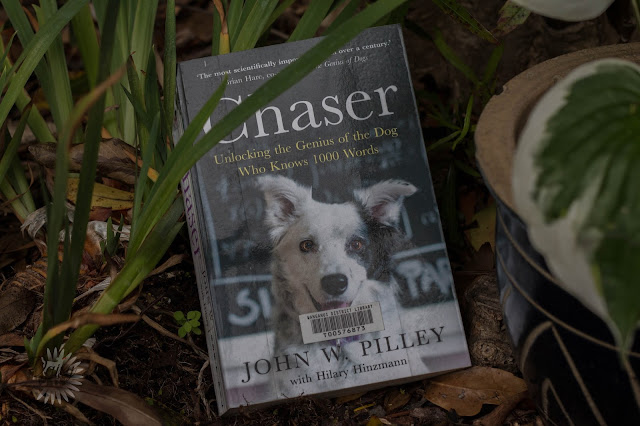Chaser, who is owned and trained by John Pilley, is thought to be the worlds smartest dog. She has learnt the names of over 1,000 toys in her collection, and can not only pick them out of a bunch, she can also follow commands on what to do with said object. John Pilley is a retired psychologist who has spent 4 - 5 hours every day since he first got Chaser teaching her these words and commands to test how intelligent dogs really are. Now that you know a bit more about Chaser and John Pilley, let's get into the book review!
To start with, this is a book written by a psychologist who has been testing for intelligence, so therefore the book is based around science. However, that doesn't mean it is a hard read. John has written it in a way that both avid science readers, and everyday people can both enjoy and understand the book. He will use some specific terminology for what he is researching and training towards, but then explain it in layman's terms. I found that it wasn't one of the most gripping reads, I didn't feel the need to continue reading constantly until it was finished. This, of course, is personal preference but it is a good thing to note if you prefer gripping reads.
Another thing that I appreciate in this book is his mentions of Clever Hans. If you have ever read about any animal intelligence, most will link back to the Clever Hans Effect and how they have to try and dispel this. John explains Clever Hans perfectly, and then connects it back to his training with Chaser to make sure that there is no chance of this effect coming into play. If you aren't sure what the Clever Hans Effect is, let me try and do my own explanation. Clever Hans was a horse who back in 1907 was trained to do maths equations and would tap out the answer. Everyone at the time was amazed, however it was later dispelled. Clever Hans didn't actually know how to do maths equations, he actually was following tiny prompts from the humans asking the questions so he knew when the correct answer was done, he could stop tapping. Ever since then, animal researchers have had to make sure that any research and tests they done were done in a way that there was no way they were unconsciously prompting the animal.
I don't want to go into any more detail about the book as I don't want to ruin it for the people who do want to read it for themselves. I think all in all I would recommend this book, as it has provided me some insight into what dogs can achieve, but also made me more aware of training techniques I can now use with Diego. I like the idea that I can implement some of these into our short training sessions each day, and unleash some of Diego's potential. I wish I had the 4 - 5 hours a day to work with him, as John has!
If you have read this book, leave me a comment below telling me what you thought of it.



No comments:
Post a Comment